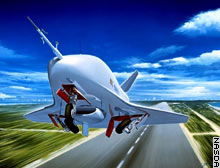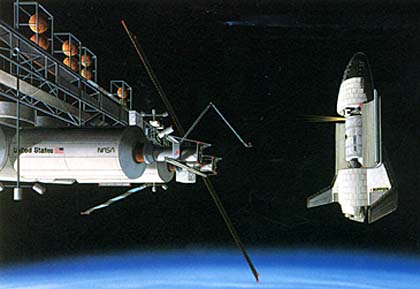Two news items from the years 2002-2003 dealing with the Japanese space shuttle
Japan will test a reusable spacecraft
10.5.2003
By: Avi Blizovsky
 Japan's space agency said on Wednesday, May 7 that it will conduct a test flight of an unmanned, reusable spacecraft, most likely later this month.
Japan's space agency said on Wednesday, May 7 that it will conduct a test flight of an unmanned, reusable spacecraft, most likely later this month.
The short space flight planned between the end of May and July 24 at the facility in Kiruna (Kiruna), Sweden, is designed to study the pressure at which the shuttle will still be stable, and it will fly at the speed of sound, said Hironi Inoue, a spokesman for NASA - National Space Development Agency, which is The official Japanese space agency.
The shuttle, much smaller than the American one, is the first prototype in Japan's 20-year program to build an unmanned space vehicle that will be reusable.
The first test, carried out in October 2002 on Christmas Island in the South Pacific, was successful when the shuttle completed its scheduled ten-minute flight.
Senior Japanese space officials are encouraged by five successful consecutive flights of the H-2A rocket they hope will be a competitive satellite launch vehicle.
22.10.2002
By: Avi Blizovsky

The experimental and unmanned Japanese space shuttle successfully took off for a test flight from Christmas Island in the South Atlantic Ocean for a short flight, it rose to an altitude of about nine kilometers and landed, despite minor jump failures during landing, back on the island from which it took off. The experiment was conducted last Friday, October 18, 2002. Despite these jumps, the aircraft was not damaged.
The 10-minute flight is the latest success in the Japanese space program, which suffers from a lack of budgets and many failures, especially in the H-2A satellite launchers that failed to put two satellites into orbit in February.
In the experiment, the navigation system and the automatic pilot assisted by GPS systems were tested. In the coming week, four more test flights are planned, during which the vehicle will reach a speed of half Mach.
According to the original plan, the Japanese were supposed to already be the owners of an operating ferry, as early as 2004, but the project is now on hold, except for the prototype due to budget constraints. Meanwhile, only 22.4 million dollars have been allocated for the experimental phase, the next phase of which will be in Sweden in the spring. The H-2A rockets will return to space in early 2003, when they will put the first Japanese spy satellite into orbit.
